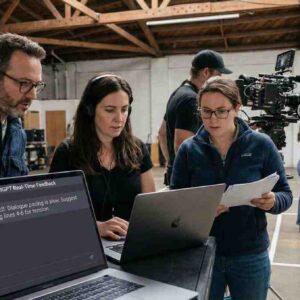Utilizing Artificial Intelligence to Bridge Linguistic Barriers
Key Highlights:
- Government-backed AI initiatives are revolutionizing language translation to foster inclusivity and enhance communication.
- Programs leverage insights from UNESCO and the United Nations to support multilingual education and government services.
- Significant advancements in real-time translation technologies are being implemented in public sectors, including healthcare and judiciary.
Introduction:In an era of global interconnectivity, effective communication across language barriers is more crucial than ever. Recognizing this, the Indian government has launched several AI-driven language translation programs. These initiatives, supported by insights from international bodies like UNESCO and the United Nations, aim to make governmental services more accessible to India’s linguistically diverse population and enhance communication on a global scale.
Government Initiatives in AI-Powered Language Translation:
Integration in Public Services:AI technologies are being integrated into public services to provide real-time translation solutions. This includes healthcare, where patients and healthcare providers can overcome language barriers, and in the judiciary, where court proceedings and legal documents are translated to ensure fairness in legal matters. These programs are designed based on guidelines from the United Nations that emphasize the importance of linguistic diversity and multilingualism in public administration.
Educational Programs and Multilingual Support:Following UNESCO’s recommendations on education and linguistic inclusion, the government has implemented AI-powered tools in educational platforms to offer multilingual support. This allows students from various linguistic backgrounds to access educational resources in their native languages, promoting better learning outcomes and cultural preservation.
Collaboration with Tech Companies:To achieve these goals, the government has partnered with leading technology firms to develop sophisticated AI translation tools. These collaborations have enabled the creation of applications that can translate multiple Indian languages instantly, supporting efforts to unify the country’s diverse linguistic landscape while respecting its cultural heritage.
Challenges and Ethical Considerations:
Accuracy and Cultural Sensitivity:While AI translation technologies offer immense benefits, ensuring their accuracy and cultural sensitivity remains a challenge. The government is actively working with linguistic experts and AI ethicists to enhance the algorithms’ ability to understand context and cultural nuances, thereby reducing misinterpretations and promoting accurate communication.
Data Privacy and Security:The deployment of AI translation services raises concerns about data privacy and security. In response, the government has enforced stringent data protection laws that comply with international standards, ensuring that personal and sensitive information processed through AI systems is safeguarded against misuse.
Conclusion:AI-driven language translation programs are pivotal in India’s strategy to enhance communication across its diverse linguistic spectrum and improve accessibility to public services. By leveraging international insights and collaborating with global tech leaders, India is poised to set a benchmark in the use of AI for social inclusion and communication enhancement. As these technologies evolve, continuous monitoring and adaptation will be essential to maximize their benefits and address potential risks.
Sources:
- United Nations Reports on Multilingualism
- UNESCO Policy on Multilingual Education













